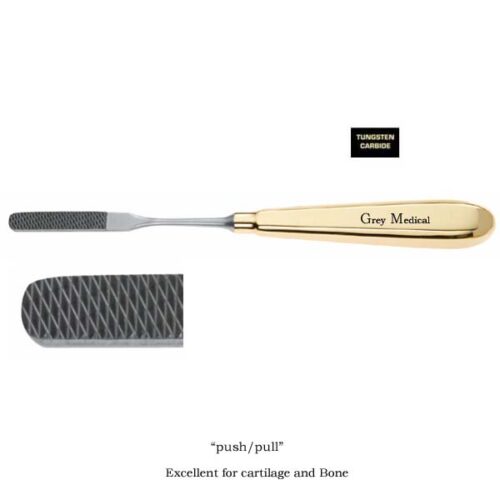The Role of Rasp Surgical Instruments in Modern Surgery
The Role of Rasp Surgical Instruments in Modern Surgery
Blog Article
Rasp surgical instruments are highly specialized tools designed for shaping, smoothing, or filing bone and cartilage during surgical procedures. These instruments are crucial in various fields of surgery, including orthopedic, plastic, and reconstructive rasp surgery as they allow surgeons to achieve precision in reshaping anatomical structures. Known for their effectiveness and durability, rasps are a staple in procedures requiring bone contouring and fine adjustments.

Features and Design
Rasp surgical instruments are typically crafted from high-quality stainless steel to ensure durability, resistance to corrosion, and compatibility with sterilization processes. They feature a textured, serrated surface designed to file or smooth down bone or cartilage with precision. Available in various sizes, shapes, and tip configurations, rasps cater to different surgical needs. Common designs include straight, curved, or angled rasps, with coarse or fine serrations depending on the level of precision required.
Applications in Surgical Procedures
Rasp instruments are widely used in orthopedic surgeries for shaping bones during joint reconstruction or repair procedures. In plastic and reconstructive surgery, they are employed to refine bone contours, such as in rhinoplasty or craniofacial surgeries. Dental surgeons also use rasps for contouring bone during implant placements or extractions. Their versatility and precision make them an indispensable tool for shaping and smoothing hard tissues in a variety of surgical contexts.
Benefits for Surgical Precision
The textured surface of rasp instruments allows for controlled bone reshaping with minimal effort, ensuring accurate results and reducing the risk of damage to surrounding tissues. Their ergonomic handles provide surgeons with a secure grip and optimal control during procedures, enhancing precision and minimizing hand fatigue. By enabling smooth and accurate adjustments, rasps contribute to better aesthetic and functional outcomes for patients.
Selecting the Right Rasp
Choosing the right rasp depends on the specific surgical procedure and the anatomical area being addressed. Factors to consider include the size, shape, and serration pattern of the rasp. For example, fine rasps are ideal for delicate adjustments, while coarse rasps are better suited for larger, more robust bone contouring. High-quality rasps are designed to retain their sharpness and effectiveness over multiple uses, ensuring consistent performance.
Maintenance and Care
Proper maintenance of rasp instruments is essential to preserve their functionality and longevity. They should be thoroughly cleaned and sterilized after each use to prevent contamination and ensure patient safety. Regular inspection for wear or damage is also crucial, as dull or damaged rasps can compromise surgical precision. Investing in high-quality rasps and adhering to proper maintenance protocols can significantly extend their lifespan and maintain their performance.
Conclusion
Rasp surgical instruments play a vital role in achieving precision and accuracy in procedures involving bone and cartilage contouring. Their versatility, durability, and ergonomic design make them an invaluable asset across multiple surgical disciplines. By selecting the appropriate rasp for each procedure and ensuring proper care, surgeons can deliver optimal results while maintaining the highest standards of safety and efficiency. Report this page